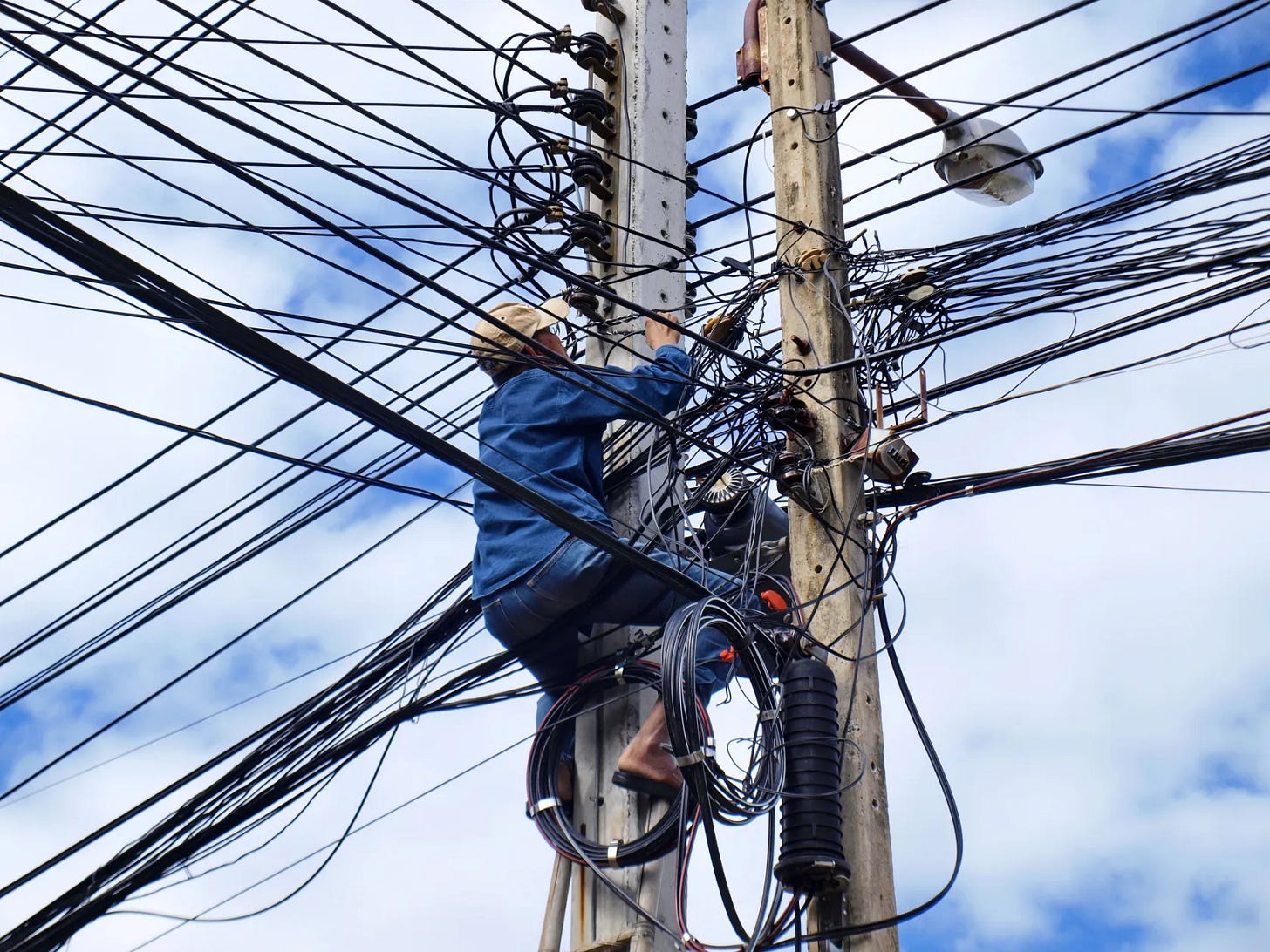1000 Nuclear Reactors
That's how much solar and wind electricity could be plugged in.
Clean energy technologies will continue to outcompete fossil fuels, not just because they are healthier, faster, cleaner, and more abundant, but because they undercut fossil fuels where they are at their weakest: their unsolvable price volatility and inefficiency.
Christina Figures - Global Climate Leader
1000 Nuclear Reactors.
That’s the equivalent electricity-generating capacity of 3000 gigawatts (GW) of solar and wind projects “awaiting connection to electrical grids around the world at the end of 2023”, according to the Renewables 2024 Global Status Report by REN21.* (There were only 413 actual nuclear reactors operating worldwide in 2023.)
That’s a huge amount of electricity, considering the total U.S. electricity generating capacity in 2023 was 1,200 GW. (*See calculation below.)
This is astonishing.
To be clear: There are 500 nuclear reactors worth* (1500 GW) of solar and wind in the advanced stages of being completed but unlikely to plug into grids for at least five years, says REN21. The other 500 reactors (1500 GW) were in the early stages of development. (This post has been updated. See P.S.)
For example:
Over 2000 solar and wind installations amounting to 350 nuclear-reactors worth of electrical generation awaiting grid connection in the U.S.(Meanwhile, power outages are twice as frequent as they were in the previous decade.)
Grid connection can take 10–15 years in the U.K.
It gets worse.
Another 350 nuclear-reactor equivalent of new solar and wind projects are being developed this year. Most of those projects won’t be connected anytime soon. So there’ll be another 1000 GW sitting around.
The total amount of solar and wind waiting connections worldwide is more than enough to replace the entire US electricity system with pollution-free, renewable energy.
And I’m not done yet.
Solar manufacturers, mainly in China, are now capable of producing 350 to 500 nuclear-reactor’s worth of cheap solar panels per year (1000 GW to 1500 GW). Yes, per year. (It takes an average of 10 years to build an actual nuclear reactor.)
Need-to-Know: Solar is now cheaper than wooden fencing
The price of solar panels has plunged 60% in the past TWO years. Low-cost panels can be bought in bulk for less than 10 cents per watt. That’s crazy cheap. If you could buy them at that price, a mere $600 worth of panels (6000 watts) could power your home for 25 years. Installation would cost considerably more.
In Germany, solar panels are being used for fencing because its cheaper than wood, reports The Financial Times.

Need-to-Know: Electrical utilities slowing clean energy revolution
Vested interests and bureaucratic hurdles, not technology, have become the major roadblocks to grid connection. Rather than investing in updating or even maintaining grids, many power utilities have been happy to sit back and collect our bill payments. For all the talk of flexible, smart grids for the past decade, investment has been too slow and too little.
In 2023, countries around the world agreed to triple renewable energy by 2030. That won’t happen without an overall investment of $4 trillion for grid and storage infrastructure.
There are only five years until 2030, and new grid investments worldwide are nowhere near $700 or $800 billion a year that’s needed.
That’s a lot of money but that investment leads to at least $12 trillion in savings on the costs of fuels (gas, coal, oil). See NtK: Save $12 Trillion with Rapid Clean-Energy Transition.
Need-to-Know: We could have 100% renewable energy much sooner IF governments act.
Unfortunately, governments continue to hand over hundreds of billions in subsides to the fossil fuel industry.
That said, solar and wind are now so cheap that government and utility bureaucracy can only slow the clean energy transition.
Communities and businesses are setting up their own independent mini-grids to take advantage of low-cost, pollution-free solar and wind.
Far more people are going off-grid entirely. For example, more than 400 million Africans now get their electricity from solar home systems. This is happening throughout the developing world.
Need-to-Know: The clean energy revolution is here, and nothing will stop it.
Until next time, be well.
Stephen
P.S. Updated to clarify that the 3000 GW of solar and wind projects were in various development stages and not necessarily completed.
* 3,000 Gigawatts of renewable energy projects were awaiting connection to power grids at the end of 2023, according to REN21. (A gigawatt can potentially supply electricity for 1 million homes.)
The 413 operational nuclear reactors in 2023 had a global electricity-producing capacity of 371.5 GW, according to the IAEA.
Since the capacity factor (the actual energy output) of solar and wind is one-third of nuclear, the 3,000 GW of idled renewable energy installations is roughly equivalent to idling 1000 nuclear reactors. (Its actually more like 1100 reactors but you get the point.) 



What does “waiting to connect to the grid” actually mean? Why are those conditions tolerated by the folks who build the solar farms? If it’s what I infer, it’s like starting a chicken ranch to sell eggs and chickens as consumer food products without having any customers. Except, however, that unused (unsold?) electrical power doesn’t pile up like unsold eggs and chicken carcasses. What am I missing?